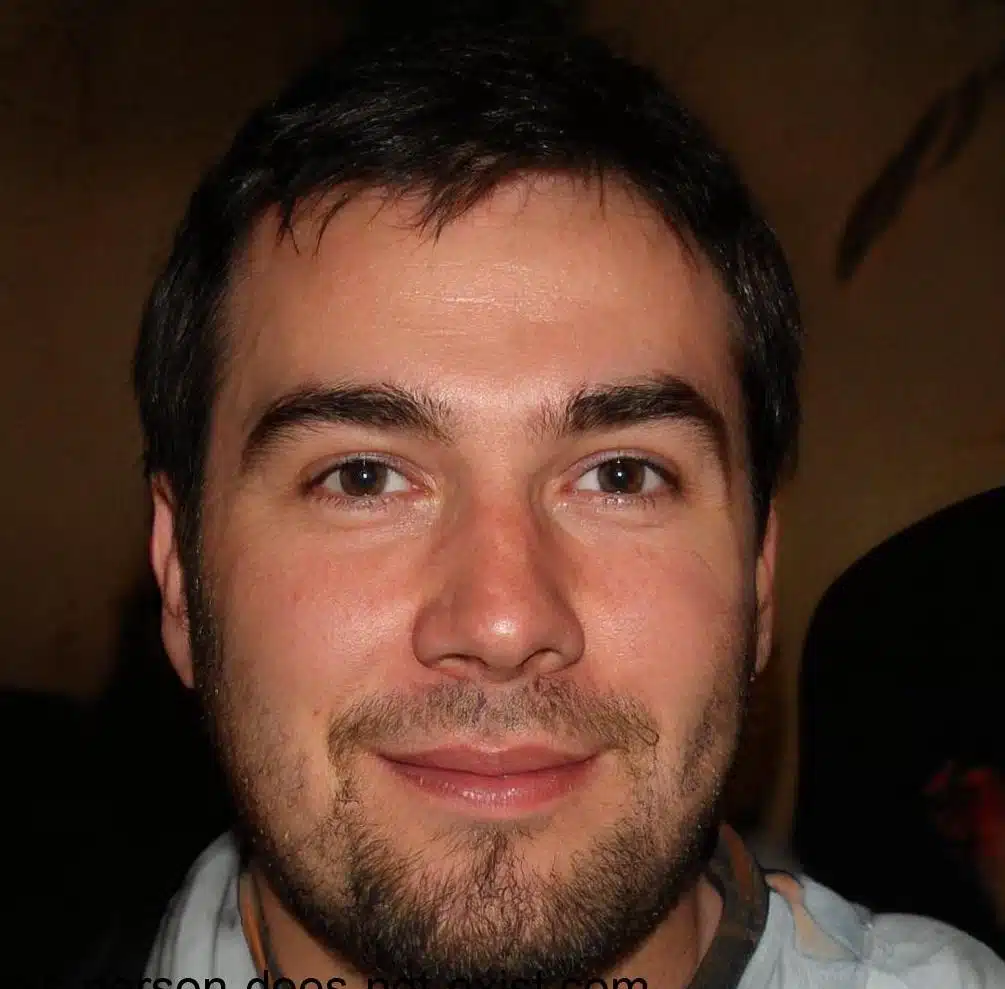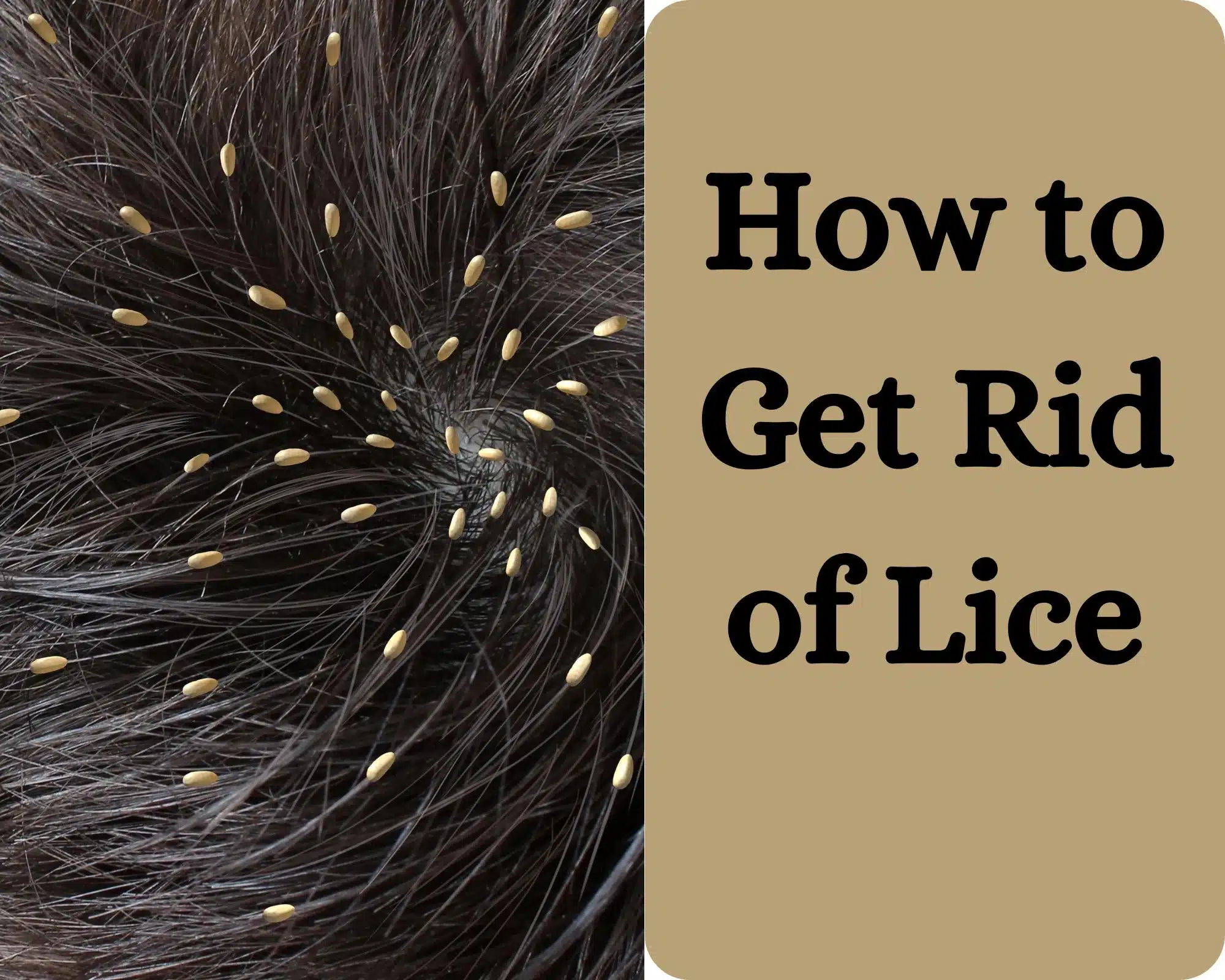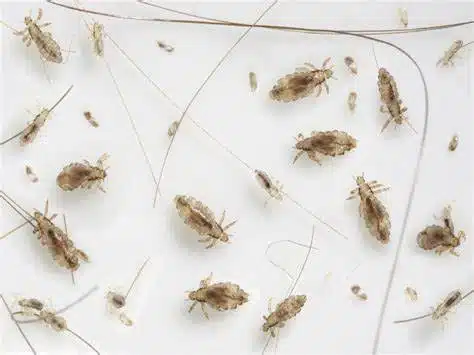Contrary to a common misconception, having lice is not necessarily a sign of being dirty. You may keep your home immaculate and have good personal hygiene but still suffer a lice infestation. It is more about proximity to an infested person or object than personal cleanliness.
Perhaps your kids picked up these gross insects from a sleepover. Regardless of the cause, tackle the problem head-on with the right treatments and prevention measures.
This post covers all the essentials you require to get rid of lice at home.
Symptoms Of Lice Infestation
Before killing the lice in your home, understand what they are and how they spread. Lice are highly contagious insects that live on human hair and scalp, but you can also find them in the body and pubic area.
They feed on blood and spread through head-to-head contact or if you share personal items like bedding, combs, and hats.
Below are the signs of a lice infestation:
1. Itching
Do you have the feeling to insistently itch yourself, especially behind the ears and at the nape of the neck? You may have lice in your head. This itching occurs due to an allergic reaction to lice saliva when the lice feed on blood from your scalp.
Read More:
2. Visible Lice
Spotting lice with your eyes can be challenging, especially in thick or dark hair, because these small, wingless insects move quickly, but it is possible. Lice are about a sesame seed’s size and are usually light brown or grayish-white.
3. Nits or Lice Eggs
It is easier to spot lice eggs than adult lice. The nits are tiny, oval-shaped, and often found near the hair scalp since the area is warm enough to keep them warm until they hatch.
You could mistake nits for dandruff or hair product residue, but the difference is that lice eggs firmly attach to the hair and are tough to take out by simply shaking or brushing your hair.
4. Scratch Marks
As you scratch your head in response to lice bites, you may leave scratch marks or small red bumps on the scalp and neck. The marks can become more visible as the infestation progresses.
Carefully inspect the hair and scalp of the members of your household with a lice comb. Segment the hair into parts and meticulously comb through each section.
Moreover, inspect personal items such as hairbrushes, combs, hats, scarves, and bedding for the presence of lice or nits. This is because lice can sometimes detach from the host and transfer onto these items, facilitating further spread.
Treat Infested Individuals
After confirming that you have lice in your home, begin the process of eliminating them by treating the individuals with lice. The process involves effectively eradicating all the lice and nits.
Below are treatment options that work on lice:
1. Medicated Shampoos and Creams
There are several over-the-counter medicated shampoos and creams with insecticides or natural ingredients to kill lice and their eggs. Buy your preferred product and apply it according to the instructions.
2. Prescription Medications
You may need more potent medications such as malathion or benzyl alcohol lotion to eliminate severe or persistent lice infestations. When using prescription medications for lice, adhere to the guidelines.
3. Natural Remedies for Lice
If you prefer natural remedies, you are in luck. There are multiple substances that can suffocate and kill lice. These are tea tree oil, lavender oil, neem oil, coconut oil, vinegar, and mayonnaise. Natural remedies are typically gentler than chemical treatments.
When using tea tree oil, lavender oil, neem oil, coconut oil, or mayonnaise, apply the treatment to the scalp and hair, then leave it on for many hours or overnight. If your preferred remedy is vinegar, mix it with water, apply the solution to the scalp and hair, and leave it for a couple of minutes.
4. Manual Removal
After applying the treatment product, manually extract dead lice and nits from the hair with a fine-toothed comb. Segment the hair into parts, meticulously comb through each section, and wipe the comb after every pass.
Wash your hair thoroughly afterward, then soak hair combs, brushes, and other hair accessories in boiling water for 5 to 10 minutes.
Wash Bedding and Clothing
Now that lice and nits are out of the hair, it’s time to deal with the clothes and bedding. Collect all the contaminated items that may have come into contact with the lice-infested individuals, including pillowcases, sheets, blankets, clothing, towels, hats, and scarves.
Sort them into separate piles, grouping the items with the same fabric type, color, and washing instructions. Lice and their nits cannot survive over 128.3°F for more than five minutes, so wash the contaminated items in hot water of at least 130°F (54°C).
After washing, set your dryer to the highest heat, toss your clothing and bedding, and then dry them for at least 30 minutes to kill any remaining lice and nits. If possible, avoid hanging items to dry because this may give lice and nits a chance to survive.
Place non-washable items like pillows in a sealed plastic bag and leave them undisturbed for at least two weeks. Without a host to feed on, lice and nits will eventually die.
Clean and Vacuum
Lice can fall on various surfaces in your home, especially where the affected individuals spend most of their time, such as the living and family rooms. So, thoroughly vacuum upholstered furniture, such as couches, chairs, and mattresses, with your vacuum cleaner’s upholstery attachment.
Also, wipe down hard surfaces, such as countertops, tables, and nightstands, with disinfectant spray or wipes. Also, sweep or vacuum floors, then mop them to extract any remaining residue.
Do not forget to vacuum the car headrests and seats. After cleaning and vacuuming, empty the vacuum canister into a trash bag or discard the vacuum bag into an outdoor garbage bin.
How To Prevent A Lice Reinfestation
Take the steps below to ensure lice do not come back, and have you repeat the process of eradicating them.
i) Avoid Head-to-head Contact
Lice mainly spreads through direct head-to-head contact. Therefore, teach your family, particularly children, about avoiding head-to-head contact with others.
Encourage them to maintain their personal space and avoid leaning their heads against others during activities such as playing, watching TV, or sleeping. In addition, it is best to refrain from activities that have you in close contact with other people, like sharing headphones, hats, or brushes.
ii) Educate Your Family Members
Take time to teach your family about lice, how they spread, and what they can do to avoid them. Clean hair is less likely to attract and harbor lice, so teach your kids the benefits of good personal hygiene practices, including regular bathing and hair washing.
Educate your family members on the signs of a lice infestation and encourage them to promptly report any symptoms so that you can initiate treatment early. Also, teach them to regularly use a fine-toothed comb to examine hair for adult lice and nits.
Furthermore, stress the importance of not sharing individual items for personal grooming, such as combs, hairbrushes, hats, scarves, and headphones. However, if sharing is unavoidable, thoroughly clean and sanitize the items between uses.
iii) Do Regular Head Checks
Routinely perform head checks, ideally every week or whenever there is a potential risk of lice exposure, especially if lice have recently infested your home or if you have children who frequently interact with others. Check your head, the other adults in your home and your children.
Pick a well-lit area to check for lice. You can illuminate the scalp with natural sunlight or a bright lamp, making it easier to spot lice and nits. Pay attention to common lice hotspots, such as behind the ears, at the neck nape, and around the head crown.
If necessary, examine the scalp and hair follicles with a magnifying glass.
iv) Keep Long Hair Tied up
If you or your kids have long hair, consider securely tying them back and away from your face and back with hair accessories like hair ties, scrunchies, clips, or headbands. Pick hairstyles such as braids, buns, ponytails, and twists because they contain long hair.
Avoid wearing long hair down or leaving it loose, especially in high-risk environments, such as school settings or crowded public spaces.
v) Wash and Vacuum Regularly
Regularly clean and vacuum items that come into contact with the hair, such as bedding and pillows. Also, wash bedding, hats, and clothing in hot water and dry them on high heat.
vi) Use Preventive Products
Consider using preventive products, such as lice-repellent sprays or shampoos with natural repellents like neem oil or tea tree oil, to deter lice.
Summary
The strategies outlined in this guide help to effectively eliminate lice from your home and prevent reinfestation in the future. So, whether you are a parent dealing with lice in your child’s hair or an individual facing an infestation yourself, this guide has the knowledge and strategies for tackling the problem. Be proactive to ensure these pesky insects do not come back.

I’m Mike Hyle, an exterminator with 7+ years of experience handling all sorts of pests, including mice, cockroaches, bed bugs, and termites. I also write for Pest Solutions DIY blog to share my knowledge and help homeowners keep their homes pest-free. Outside work, I enjoy hunting, snowshoeing, and exploring nature. Check out my blog for helpful pest control tips!


